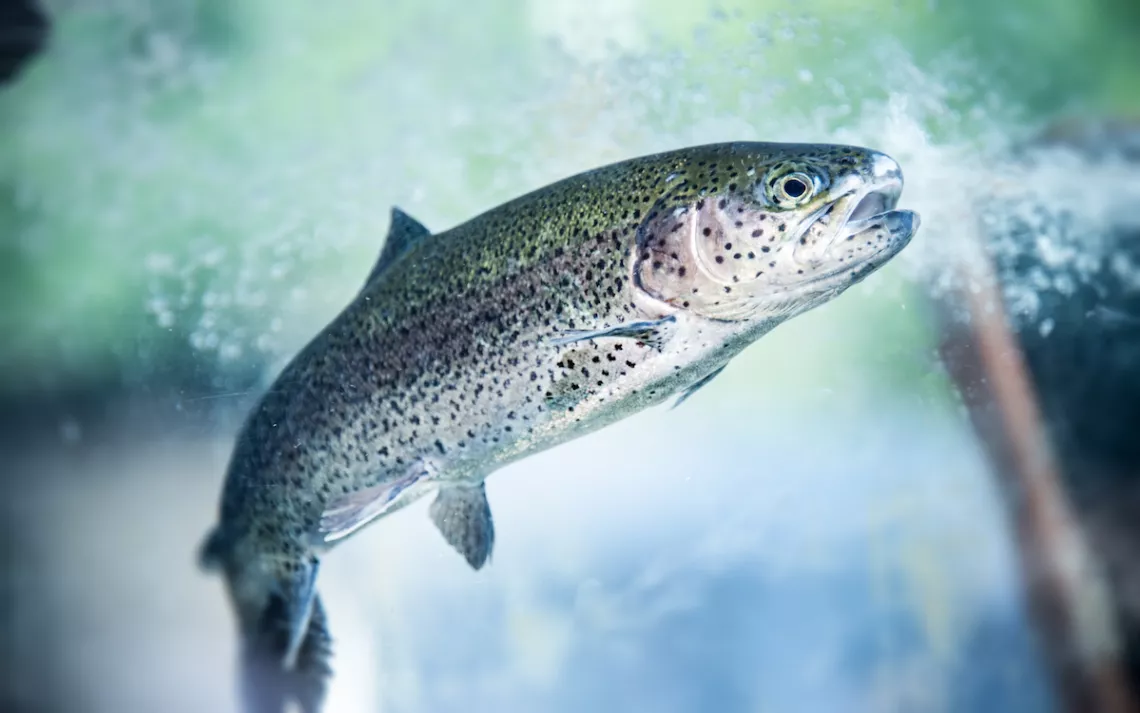Animal Magnetism
Exposing trout to bursts of magnetism has given researchers a genetic road map

Photo by Max2611/iStock
It’s always been a natural mystery how homing pigeons navigate hundreds of miles back to their roosts, and how trout and salmon spend entire lives in the ocean but are able to swim back to the very spot where they were born to spawn. Since the late 1960s, researchers have believed that some species of animals have a “hidden” sense called magnetoreception—the ability to perceive very weak signals from Earth’s magnetic field and navigate using those cues. Now, researchers have found evidence that all animals have this sense, including birds, bees, fish, sea turtles, eels, and even some species of salamanders and frogs. (At least one scientist claims humans have it, too, but we won’t get into that minefield.)
Just how that sense actually works on a molecular and cellular level has been difficult for scientists to figure out. That’s why researchers Sönke Johnsen and Bob Fitak at Duke University decided to solve the puzzle by highlighting the genes in the rainbow trout genome that might be used in magnetoreception.
The researchers bought small trout from a fish farm in North Carolina, keeping them in an aquarium in the basement of their building. They then randomly selected trout from the pool for testing, giving them a burst of magnetic radiation with a machine usually used to magnetize objects like screwdriver tips. After about 10 minutes, they euthanized the trout and took samples of their brains.
The idea was that the magnetic burst would switch on or off certain genes in response to the pulse. After sequencing the DNA of 10 magnetized trout, the researchers compared them to the 40,000 genes previously described in the trout genome. What they found were 180 genes that seemed to be impacted by the magnetization.
“The field studying this magnetic sensation is usually based on behavior and physiology and molecular work on a component called cryptochrome,” says Fitak. “We wanted to throw out there another list of candidates. We hope other people will take it and go with it.” The study appears in the journal Biology Letters.
Some of the genes expressed are related to the two current theories of how magnetoreception works. One system is based on magnetite, a type of magnetized iron that researchers have found in the brains and bodies of magnetic-field-sensitive animals. It’s believed the particles act as nano-compasses, aligning with the earth’s magnetic field lines and relaying that information to the animal.
Fitak says that while researchers believe magnetite is likely involved in magnetoreception, studying it within the animals has been nearly impossible. “In practice, the amount of magnetite needed is so small that determining what occurs in the brain and what is contamination is really difficult,” says Fitak. “It’s everywhere, even in water samples.”
Another approach is studying ferratin, a protein that transports and stores iron within cells. But studying ferratin and its relationship to magnetoreception is equally difficult, since messing with or removing ferratin from an organism leads to death.
The other type of magnetoreception hypothesized relies on cryptochrome, a type of light-sensitive molecule found in the eyes of birds and some other animals, in which the magnetic field activates photoreceptors in the eye.
So far, researchers have yet to see magnetite in action or observe how cryptochrome might affect a bird’s neural circuitry. And they are at a loss to determine whether the two systems are related.
Fitak says his study might help clear up that last question. His research shows that some of the 180 genes identified in the trout had to do with both ferratin and the optic nerve, meaning both systems might be intertwined. “The results suggest that the detection system [in trout] is based on iron that may be connected with or inside the eyes,” Johnsen says in a press release about the study.
In the next stage of the work, Fitak hopes to study shad, another type of fish that returns to freshwater areas on the East Coast every spring to spawn. In that research, he intends to focus on genes expressed in the fish’s retinas to find more potential genetic relationships with cryptochrome.
 The Magazine of The Sierra Club
The Magazine of The Sierra Club